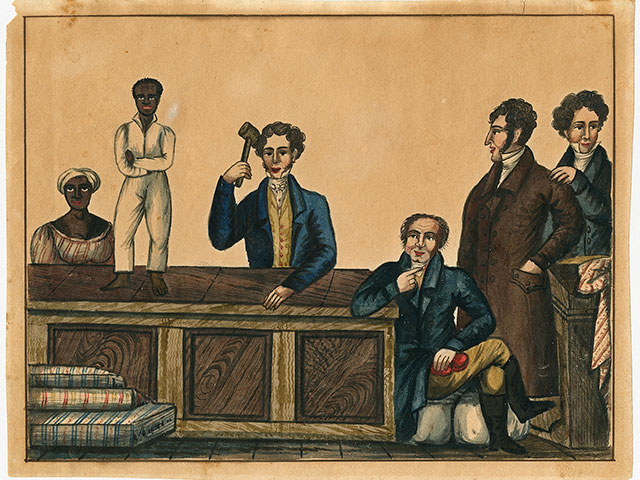410 Chartres Street
In 1808, America abolished the international slave trade, ending the export of people from the African continent to the Americas. The domestic slave trade, however— the buying and selling of slaves within the U.S.—continued until the close of the Civil War in 1865.
During those 57 years between 1808 and 1865, an estimated one million people found themselves at the center of a forced migration that wrought havoc on the lives of enslaved families, as owners and traders in the Upper South—Maryland, North Carolina, Virginia, and Washington, DC—sold and shipped surplus laborers to the expanding Lower South—Alabama, Florida, Louisiana, Mississippi, and Texas. Many of those individuals passed through New Orleans, which was the largest slave market in antebellum America.
The exhibition Purchased Lives: New Orleans and the Domestic Slave Trade examined the individuals involved in the trade and considers New Orleans’s role in this era of U.S. history. Erin M. Greenwald, a former historian at The Historic New Orleans Collection, curated the display, which included period broadsides, paintings, and prints illustrating the domestic slave trade, ship manifests, and first-person accounts from slave narratives and oral histories.
The objects on view represented items from THNOC’s holdings as well as artifacts from Belmont Mansion in Nashville; Evergreen Plantation in Edgard, Louisiana; the Louisiana State Museum; the Midlo Center for New Orleans Studies at the University of New Orleans; the National Archives and Records Administration; the New Orleans Notarial Archives; Touro Infirmary Archives; and private collections.
Resources presented in conjunction with Purchased Lives
1. Mapping the Coastal Slave Trade, 1819–1860
2. The Lost Friends Database
4. Freedom on the Move: Mapping Fugitive Slave Ads

